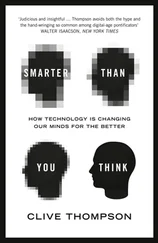The insights from many discussions about teaching methodology with Ted Landau, Larry Lilliston, and Dean Purcell, all of Oakland University, were incorporated into the book. Reviewers of recent editions who were particularly helpful include Michael Choban, West Virginia Wesleyan University; David DiBattista, Brock University; Steven Isonio, Golden West College; John Ruscio, Elizabethtown College; Allen Salo, University of Maine at Presque Isle; Cindy Sifonis, Oakland University; Michael Tagler, Nebraska Wesleyan University; and Chris Ward, Stonehill College.
My editor at Pearson, Stephen Frail, has provided guidance, enthusiasm, and support for the book, as has his editorial assistant, Madelyn Schricker. Robyn Macpherson is thanked for her diligent library and reference assistance on several editions prior to this one.
Finally, I wish to thank Paula J. Stanovich for more than just the emotional support that is routinely alluded to in acknowledgments. Her concern for all human beings, particularly those less fortunate, is an inspiration to all who know her. A view we both share is that all human beings should have the opportunity to utilize their full potential. This book attests to the fact that I have had such an opportunity. Paula works to speed the day when this opportunity will be fully extended to all individuals with disabilities.
CHAPTER 1 Psychology Is Alive and Well (and Doing Fine Among the Sciences)
Stop 100 people on the street and ask them to name a psychologist, either living or dead. Record the responses. Of course, Dr. Phil, Wayne Dyer, and other “media psychologists” would certainly be named. If we leave out the media and pop psychologists, however, and consider only those who have made a recognized contribution to psychological knowledge, there would be no question about the outcome of this informal survey. Sigmund Freud would be the winner hands down. B. F. Skinner would probably finish a distant second. No other psychologist would get enough recognition even to bother about. Thus, Freud, along with the pop psychology presented in the media, largely defines psychology in the public mind.
The notoriety of Freud has greatly affected the general public’s conceptions about the field of psychology and has contributed to many misunderstandings. For example, many introductory psychology students are surprised to learn that if all the members of the American Psychological Association (APA) who were concerned with Freudian psychoanalysis were collected, they would make up less than 10 percent of the membership. In another major psychological association, the Association for Psychological Science, they would make up considerably less than 5 percent (Engel, 2008). One popular introductory psychology textbook (Wade & Tavris, 2008) is over 700 pages long, yet contains only 15 pages on which either Freud or psychoanalysis is mentioned—and these 15 pages often contain criticism (“most Freudian concepts were, and still are, rejected by most empirically oriented psychologists,” p. 19). The authors of one survey of trends in psychology have summarized the situation by noting that “psychoanalytic research has been virtually ignored by mainstream scientific psychology over the past several decades” (Robins, Gosling, & Craik, 1999, p. 117).
In short, modern psychology is not obsessed with the ideas of Sigmund Freud (as are the media and some humanities disciplines), nor is it largely defined by them. Freud’s work is an extremely small part of the varied set of issues, data, and theories that are the concern of modern psychologists. This larger body of research and theory encompasses the work of five Nobel Prize winners (David Hubel, Daniel Kahneman, Herbert Simon, Roger Sperry, and Torsten Wiesel) and a former director of the National Science Foundation (Richard Atkinson), all of whom are virtually unknown to the public.
It is bad enough that Freud’s importance to modern psychology is vastly exaggerated. What makes the situation worse is that Freud’s methods of investigation are completely unrepresentative of how modern psychologists conduct their research. In fact, the study of Freud’s methods gives an utterly misleading impression of psychological research. For example, Freud did not use controlled experimentation, which, as we shall see in Chapter 6, is the most potent weapon in the modern psychologist’s arsenal of methods. Freud thought that case studies could establish the truth or falsity of theories. We shall see in Chapter 4 why this idea is mistaken. As one historian of psychotherapy has noted, “If Freud himself was a scientist, it was a strange science he was promulgating. . . . Psychoanalysis contained theories and hypotheses, but it lacked a method of empirical observation” (Engel, 2008, p. 17).
Finally, a critical problem with Freud’s work concerns the connection between theory and behavioral data. As we shall see in Chapter 2, for a theory to be considered scientific, the link between the theory and behavioral data must meet some minimal requirements. Freud’s theories do not meet these criteria (Dufresne, 2007; Engel, 2008). To make a long story short, Freud built an elaborate theory on a database (case studies and introspection) that was not substantial enough to support it. Freud concentrated on building complicated theoretical structures, but he did not, as modern psychologists do, ensure that they would rest on a database of reliable, replicable behavioral relationships. In summary, familiarity with Freud’s style of work can be a significant impediment to the understanding of modern psychology.
In this chapter, we shall deal with the Freud problem in two ways. First, when we illustrate the diversity of modern psychology, the rather minor position occupied by Freud will become clear. Second, we shall discuss what features are common to psychological investigations across a wide variety of domains. A passing knowledge of Freud’s work has obscured from the general public what is the only unifying characteristic of modern psychology: the quest to understand behavior by using the methods of science.
The Diversity of Modern Psychology
There is, in fact, a great diversity of content and perspectives in modern psychology. This diversity drastically reduces the coherence of psychology as a discipline. Henry Gleitman (1981), winner of the American Psychological Foundation’s Distinguished Teaching Award, characterized psychology as “a loosely federated intellectual empire that stretches from the domains of the biological sciences on one border to those of the social sciences on the other” (p. 774).
Understanding that psychology is composed of an incredibly wide and diverse set of investigations is critical to an appreciation of the nature of the discipline. Simply presenting some of the concrete indications of this diversity will illustrate the point. The APA has 54 different divisions, each representing either a particular area of research and study or a particular area of practice (see Table 1.1). From the table, you can see the range of subjects studied by psychologists, the range of settings involved, and the different aspects of behavior studied. The other large organization of psychologists—the Association for Psychological Science—is just as diverse. Actually, Table 1.1 understates the diversity within the field of psychology because it gives the impression that each division is a specific specialty area. In fact, each of the 54 divisions listed in the table is a broad area of study that contains a wide variety of subdivisions! In short, it is difficult to exaggerate the diversity of the topics that fall within the field of psychology.
TABLE 1.1 Divisions of the American Psychological Association
Читать дальше












